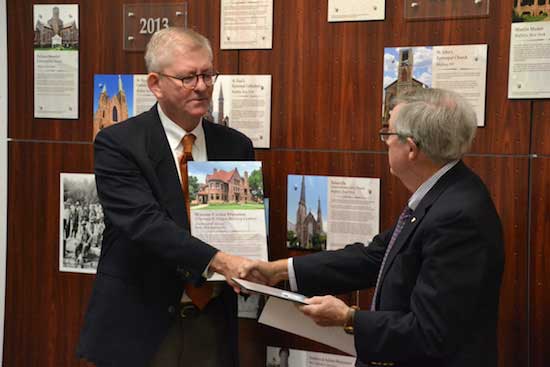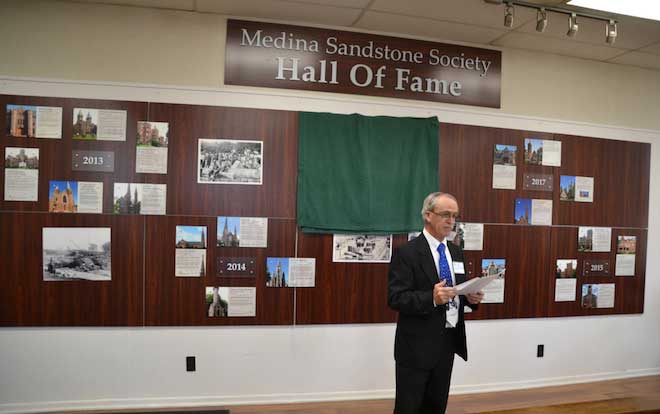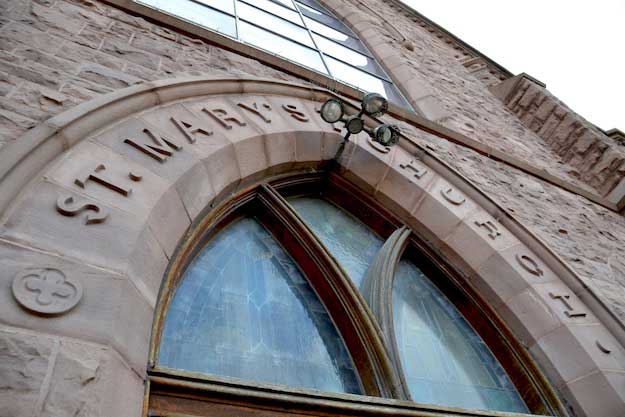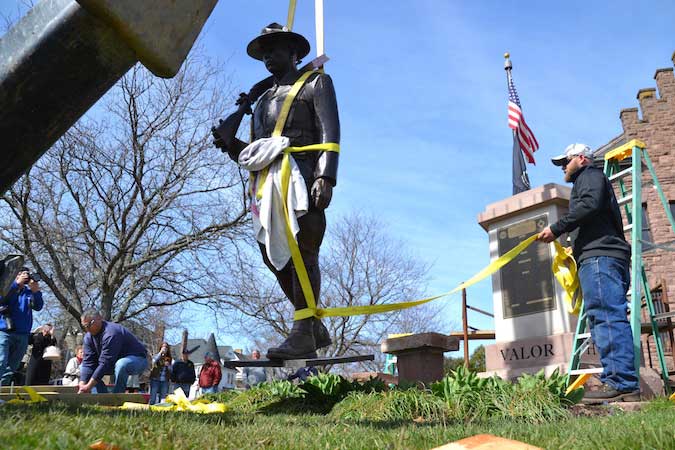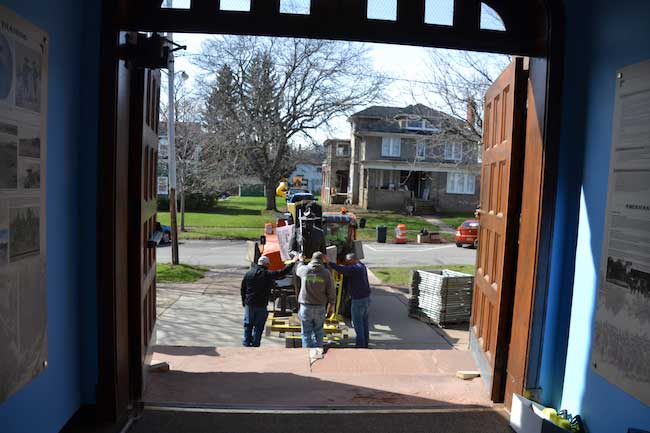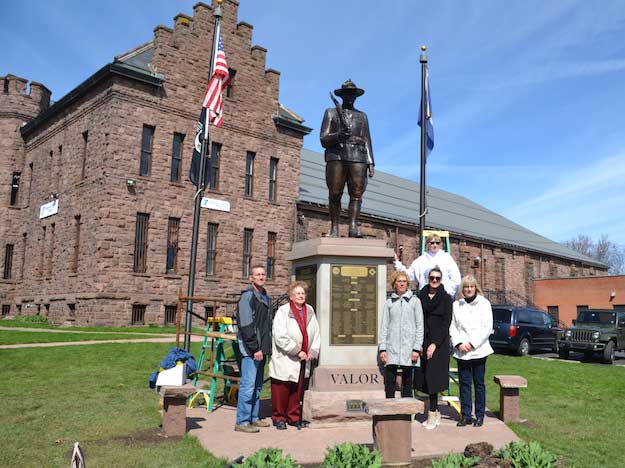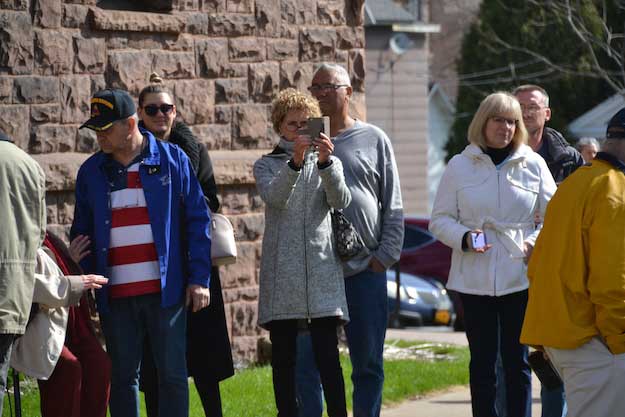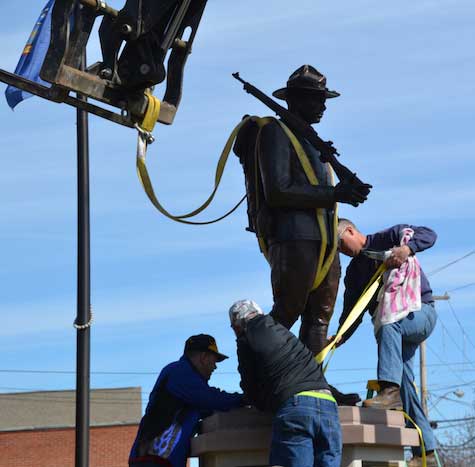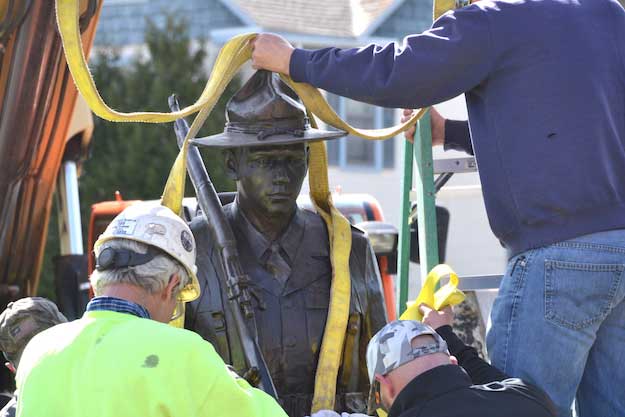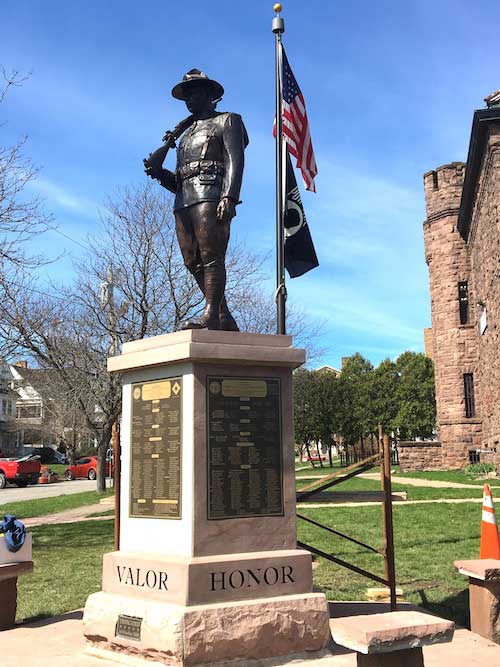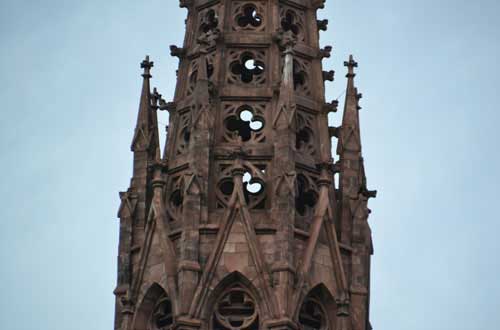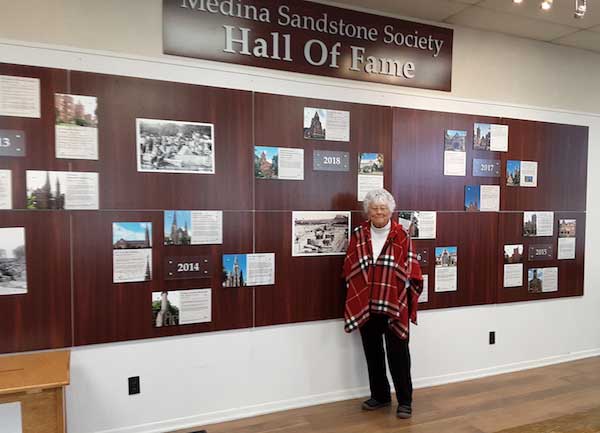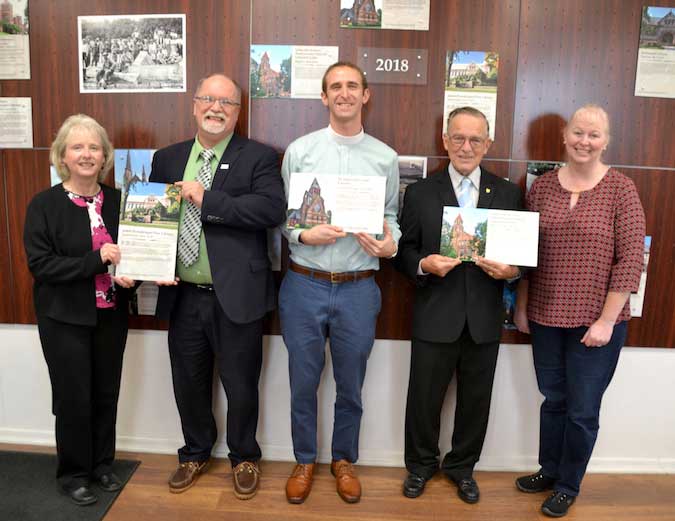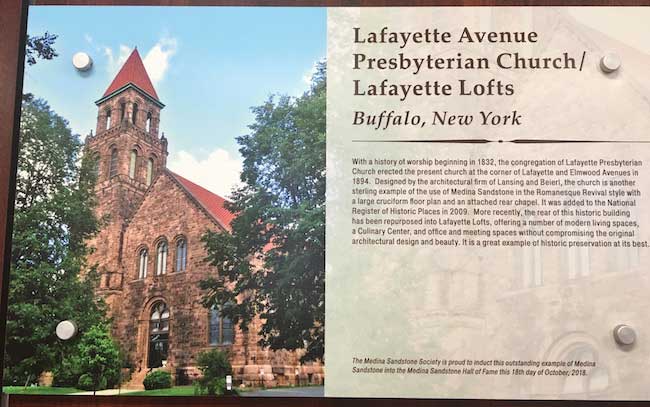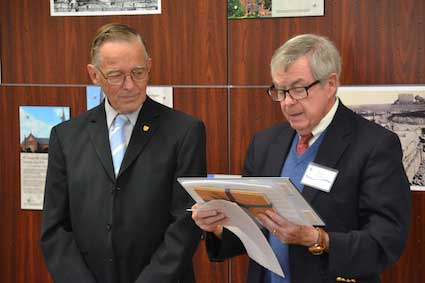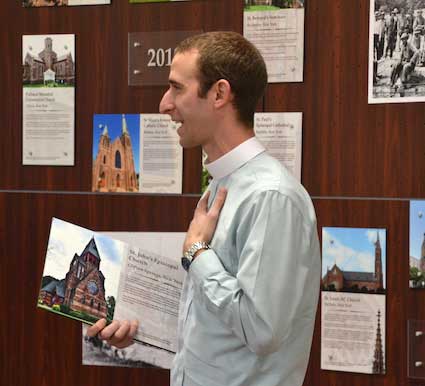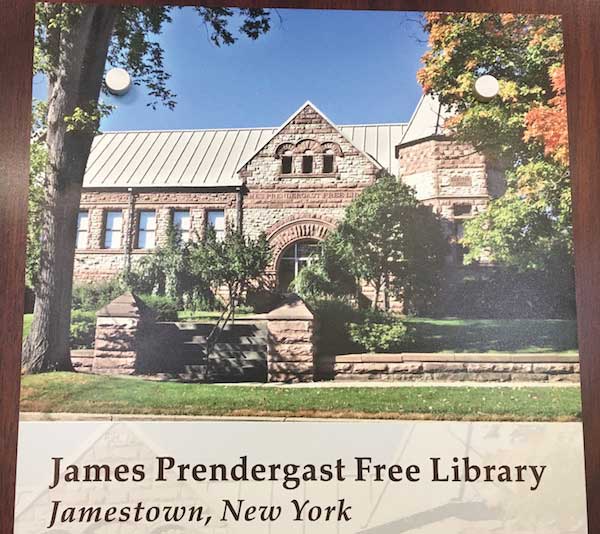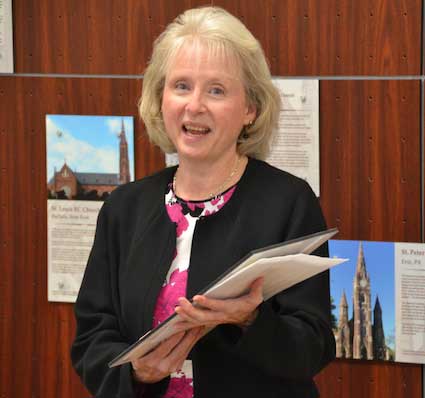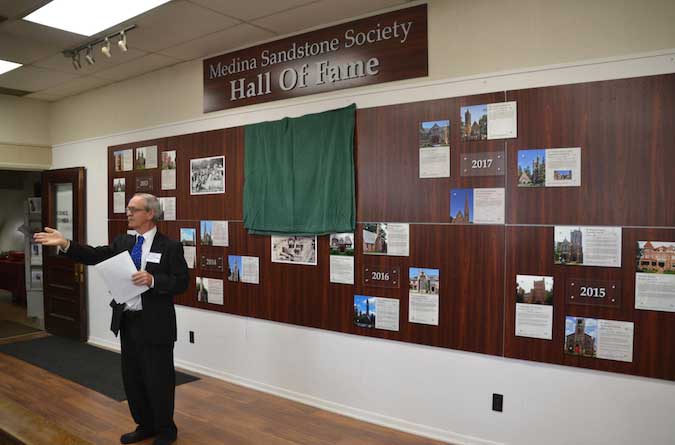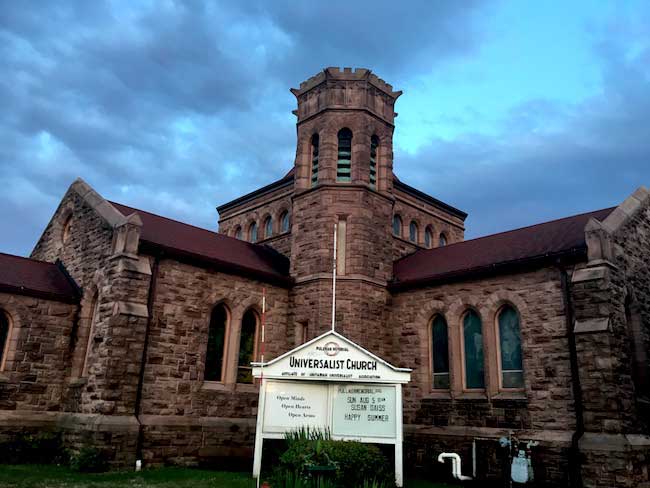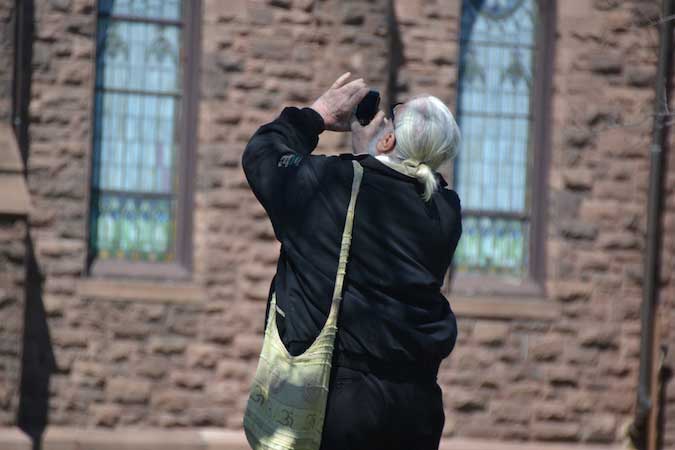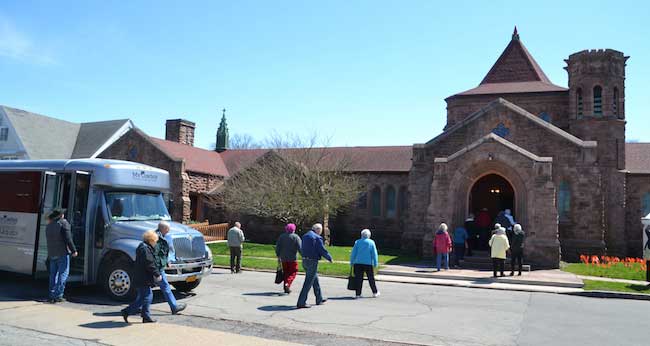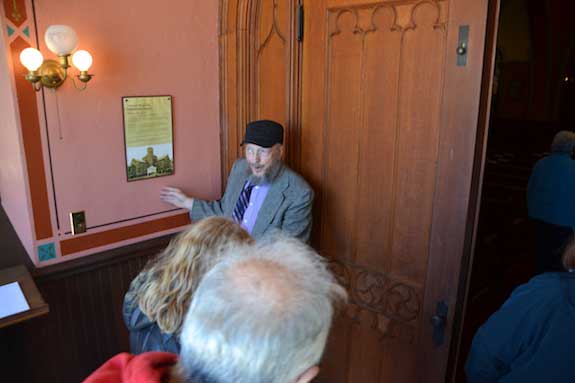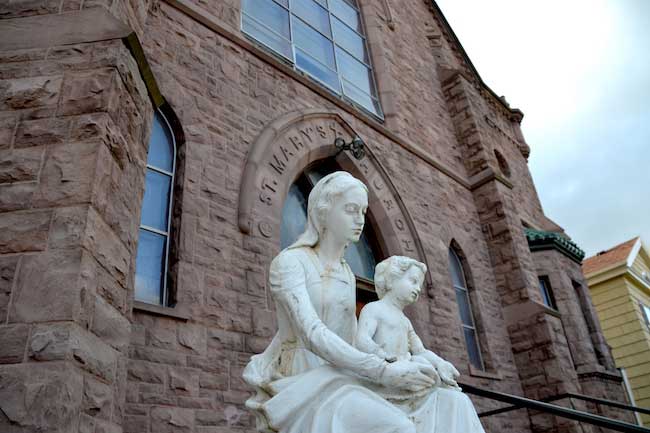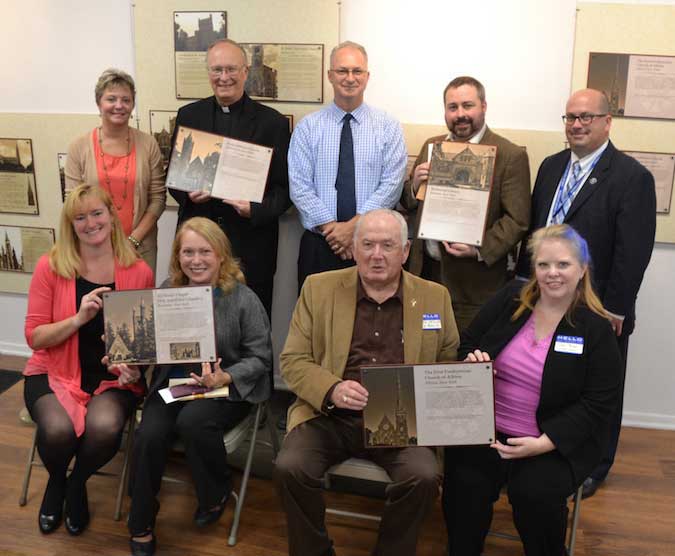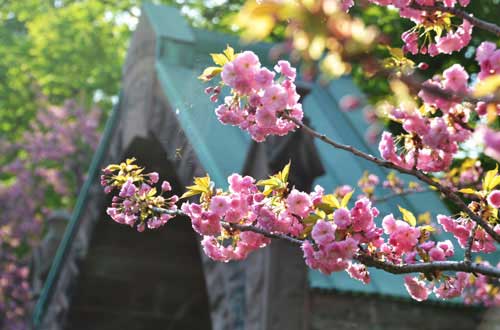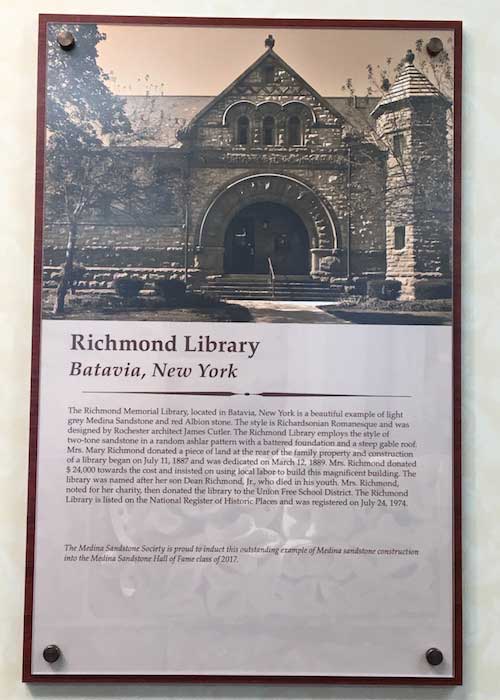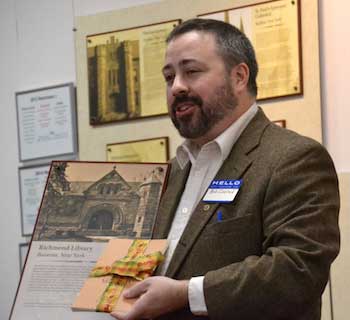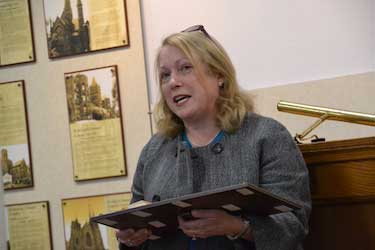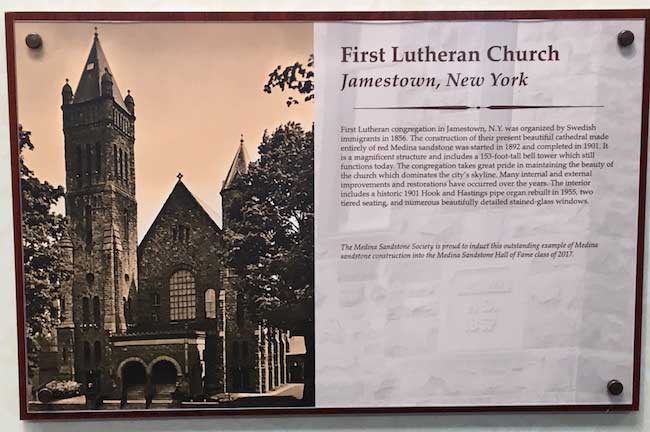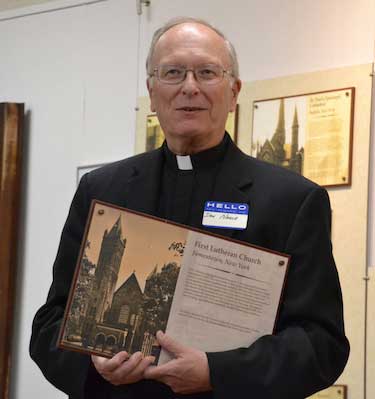Bent’s Opera Hall inducted into Medina Sandstone Hall of Fame
St. Luke’s Episcopal Church in Brockport, St. Mary’s Catholic Church in Canandaigua also recognized
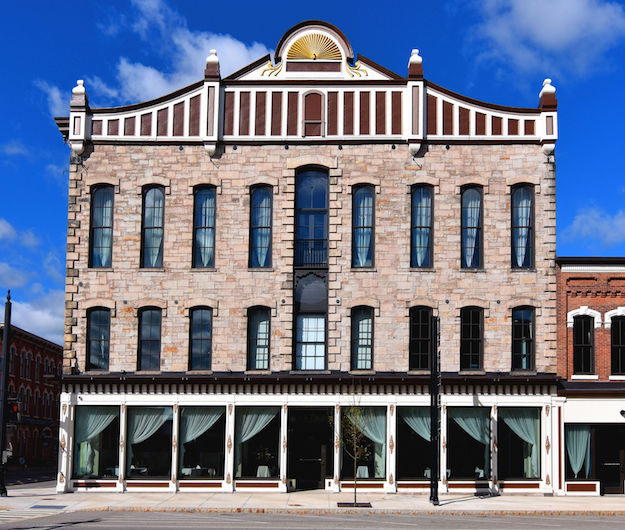
Photos courtesy of David Miller: Bent’s Opera House in Medina looks stunning after a three-year restoration effort.
MEDINA – Three new sandstone structures were inducted into the Sandstone Hall of Fame on Thursday, in a ceremony which also included recognition of five sandstone homes built by architect William Jackson between the 1820s and 1860s.
Inductees include the Bent’s Opera House in Medina, St. Luke’s Episcopal Church in Brockport and St. Mary’s RC Church in Canandaigua.
Jim Hancock, chairman of the Hall of Fame committee, said the first sandstone induction took place in 2013. Since then, including this year’s inductees, 32 buildings and monuments have been named to the Hall of Fame.
“Purpose of the Hall of Fame was to recognize beautiful structures made of our stone,” Hancock said. “Medina Sandstone can be found in buildings and roads across the United States, and from Cuba to Buckingham Palace.”
Hancock explained to be selected to the Sandstone Hall of Fame a nominee must fall into one of several classes – church, private residence, public building or any architecturally unique structure.
Criteria considered include its age, if it is still in use, it’s beauty and architectural uniqueness.
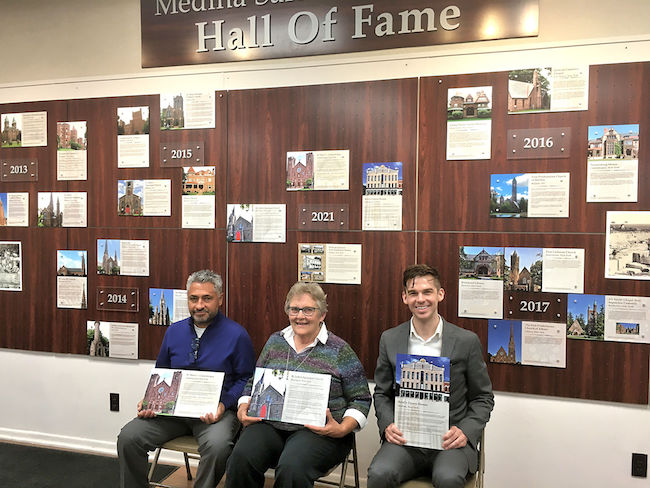
The 2021 class of inductees into the Sandstone Hall of Fame hold their plaques after the ceremony Thursday at City Hall. From left are Anthony DiPrima, director of finance and administration at St. Mary’s Church in Canandaigua, Karen Baase from Luke’s Harvest Kitchen at St. Luke’s Episcopal Church in Brockport and Justin Bruce, general manager of Bent’s Opera House in Medina.
Bent’s Opera House is one of the oldest surviving theaters in the entire nation, having been built at the height of the Civil War. From 1865 to the early 1920s, it was the cultural center of the Medina area. Its construction is of native Medina Sandstone, laid in a random ashlar pattern with a hammered finish.
The opera house was built by Don Carlos Bent, a wealthy local farmer, who secured the services of local sandstone builder Patrick O’Grady.
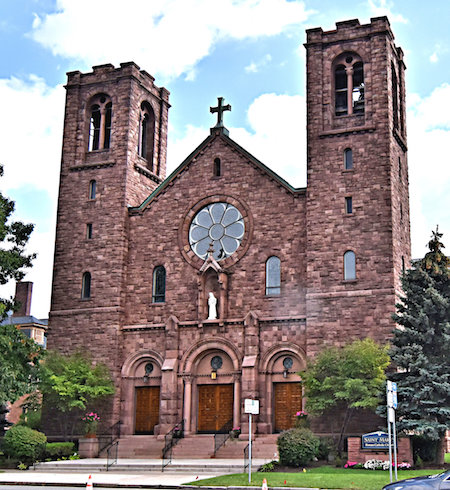
St. Mary’s Catholic Church in Canandaigua
The building was in danger of collapse in the early 21st century when it was donated by Bank of America to the Orleans Renaissance Group. They then sold it to Talis Equity, who took on one of the community’s most ambitious renovation projects in history, working more than three years to fortify the building and redesign it to include a restaurant, hotel and entertainment/lecture hall in the former opera house.
In accepting the plaque for Bent’s, Justin Bruce, general manager, said owners Roger and Heather Hungerford appreciated the honor, although they were unable to attend.
Anthony DiPrima, finance director at St. Mary’s Church, said the Sandstone Hall of Fame committee visited his church two years ago, but the church didn’t make the list for induction. Then the committee returned this year, and viewed extensive renovations which had been done to the interior of the building.
“We felt pretty confident our church would be inducted into the Hall of Fame this year,” DiPrima said. “This is the first honor I’m aware of that our church has received for its architecture, and with all our interior renovations, this is the cherry on the ice cream.”
St. Mary’s RC Church at 59 North Main St., Canandaigua, traces its parish back to 1843, when a small group of Catholic families began meeting. The first St. Mary’s Church was built in 1846, but by 1865 membership had grown, and a new church was needed. The old J. Albert Granger property was purchased in 1873, but construction was delayed to pay off the debt.
Construction of the current church was started in 1903. Architects were Gordon & Madden of Rochester. The building was dedicated Dec. 17, 1905.
The Building Committee was pleased with the use of pink Medina Sandstone and they got good terms for the sandstone and favorable railroad rates for the delivery of this beautiful stone.
In 2007, St. Benedict’s Parish was established when St. Mary’s in Canandaigua and St. Benedict’s in Bloomfield became clustered.
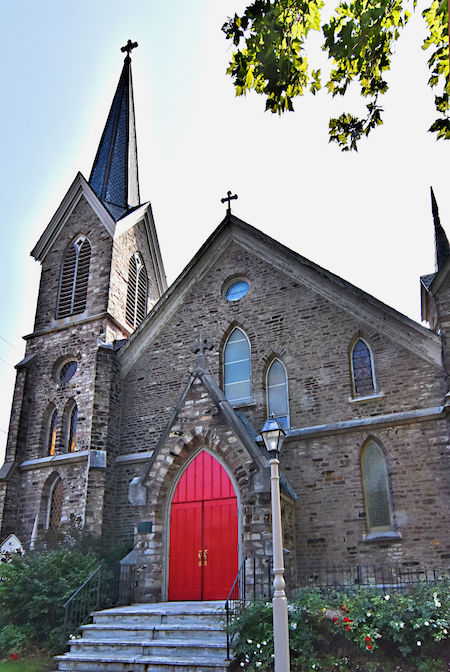
St. Luke’s Episcopal Church in Brockport
St. Luke’s Episcopal Church at 14 State St., Brockport, has been a dominant, soaring presence on Brockport’s Main Street since 1855.
The congregation paid $6,897 to have the church constructed of Medina Sandstone from 1854 to 1855 in a Gothic Revival style. In 1903, a parish hall was added in Medina sandstone with a Romanesque style. It has been used as a church school, meeting space, gymnasium in the basement, stage on the third floor and was even set up as a hospital at one time for a week-long clinic for tonsillectomies.
St. Luke’s continues to be used for many outreach programs, such as food, clothing, music and ministry. The church has hosted the Brockport Ecumenical Food Shelf since 1972.
The church features several Tiffany windows, including two groupings of three windows. Tiffany created a scene of “The Nativity” at the narthex. St. Luke’s was listed on the National Register of Historic Places in 1990 and was declared a “Historic Landmark” by the Brockport Historic Preservation Board in 2000.
Several people attended the ceremony from St. Luke’s in Brockport, including the Rev. Elizabeth Harden and members Bill Henderson and Karen Baase.
The Rev. Harden said she is from Utah, so Medina Sandstone was all new to her.
“This is an honor, for sure,” she said. “St. Luke’s has been so well cared for. The building has been repurposed several times to meet the needs of the community, so this is a fitting tribute.”
“Getting this recognition is amazing considering the number of places to be considered,” Henderson said. “I knew the church was made of Medina Sandstone, but I didn’t know about the Hall of Fame and Sandstone Society.”
Baase, who lives near Barre, said she was part of the group which gave the Hall of Fame committee the grand tour when they visited.
“We are pleased and honored to be recognized, and are so fortunate to learn more about sandstone,” she said.
Dave Miller, president of the Sandstone Society, shared the history of sandstone in the Medina area.
He explained sandstone was first discovered when the canal was dug in 1825.
“If it wasn’t for the canal, Medina wouldn’t be here, and we wouldn’t know so much about Medina Sandstone,” he said.
At least 30 quarries existed at one time, and a few lasted until the 1950s, Miller said. Most of Medina’s sandstone was used for roads.
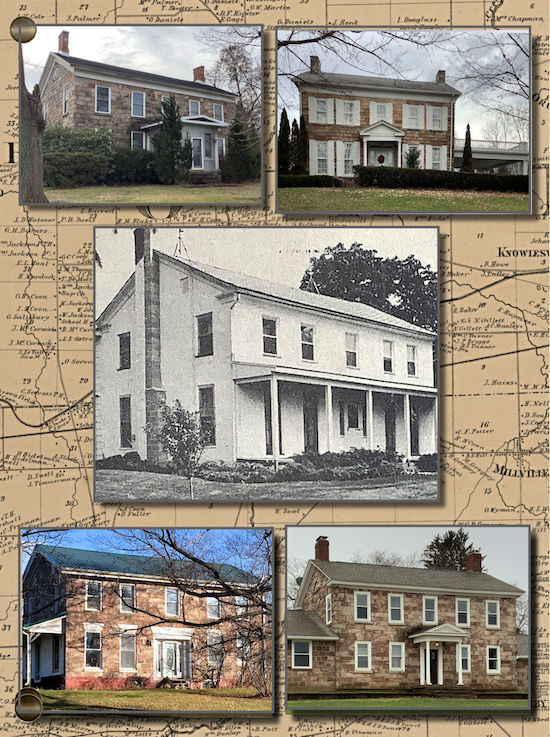
Homes built by William Jackson are, clockwise from top left, 10598 Ridge Rd., 10923 West Center St. Ext., 11986 Telegraph Rd. and 3531 Fruit Ave. In the center is the original Jackson homestead at 3669 Fruit Ave., which was stuccoed over about 75 years ago.
Following induction of these three structures, Miller explained their reason for including the five sandstone homes designed by Jackson.
“This is a departure from what we’ve done in the past,” Miller said. “It goes back to last year when we couldn’t travel due to the pandemic. We wondered if there wasn’t something we could do to recognize the two dozen sandstone homes in Medina and vicinity. They are simple, but have a beauty of their own.”
Miller explained many farmers came to Medina from Central New York in the
1800s, built log cabins and then brought their families here. William Jackson was one of these settlers, who came to the town of Ridgeway in 1826 and purchased 100 acres of land. One of the earliest settlers in the town, he was also one of the first to build homes from what would later become known as Medina sandstone.
Pioneer History of Orleans County reports that “In a short time, he purchased more land which he fitted and cultivated into one of the finest farms in the area.”
This was before any commercial sandstone quarry had been established, but the Erie Canal construction had revealed readily accessible sandstone in Medina, some of it very close to the ground.
The five homes acknowledged by the Sandstone Hall of Fame include the original Jackson homestead at 3669 Fruit Avenue, which was stuccoed over about 75 years ago; 10598 Ridge Rd., 10923 West Center St., 11986 Telegraph Rd., and 3531 Fruit Ave.
Miller noted the similarity in the homes Jackson built – all have a center door with two windows on each side and five windows in the second story.
The Sandstone Hall of Fame is located at City Hall on the corner of Main Street and Park Avenue.



















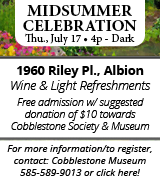







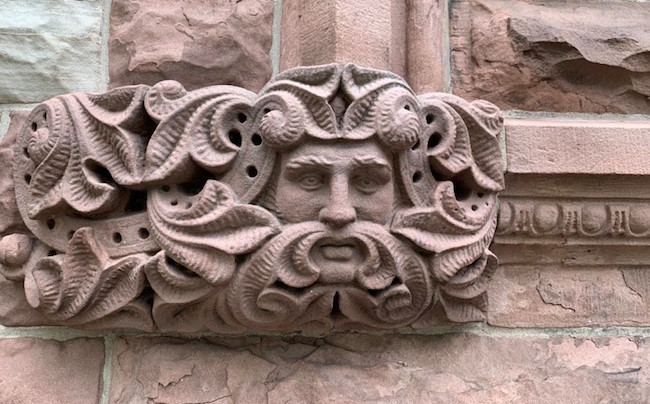
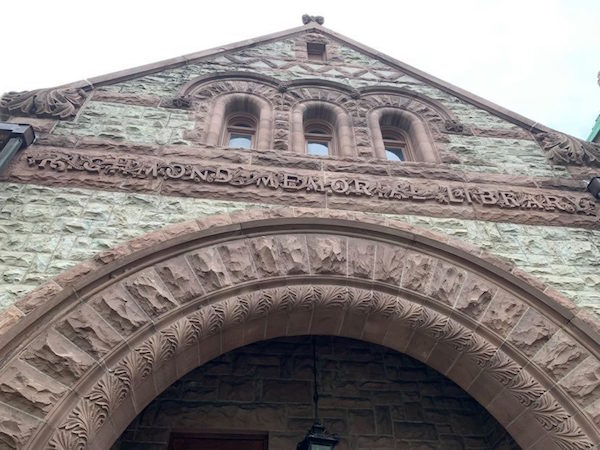


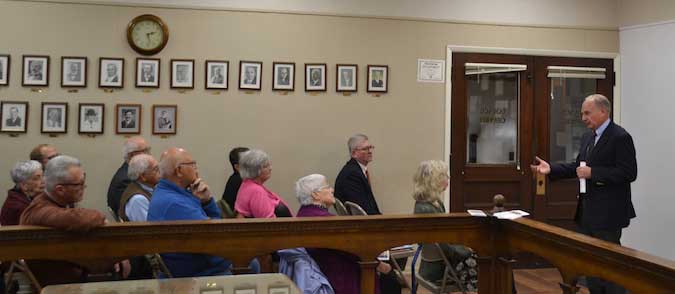
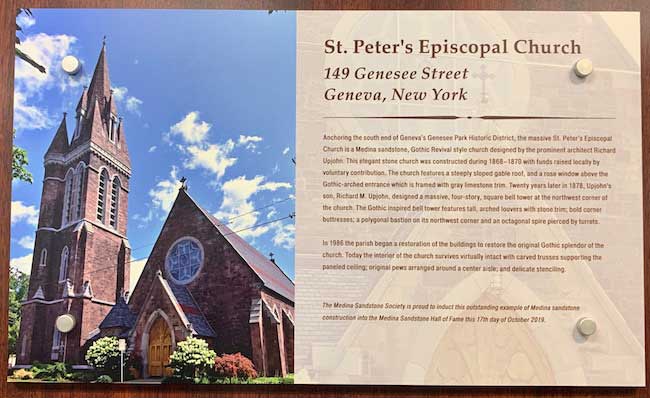
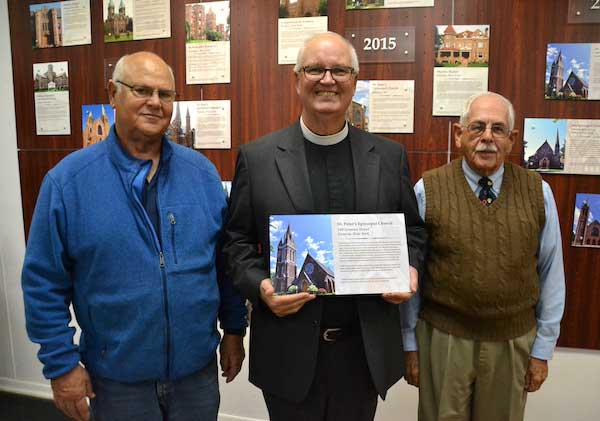
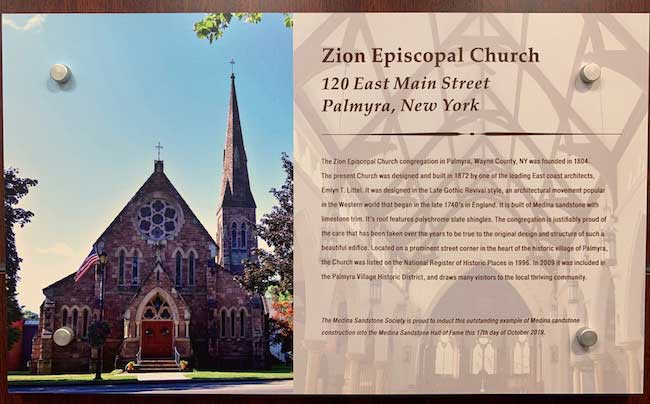
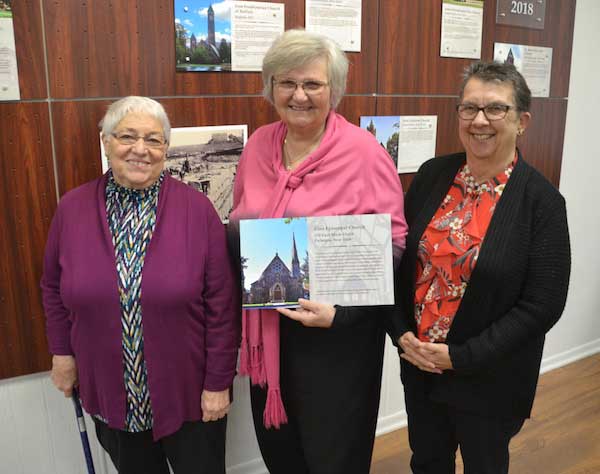
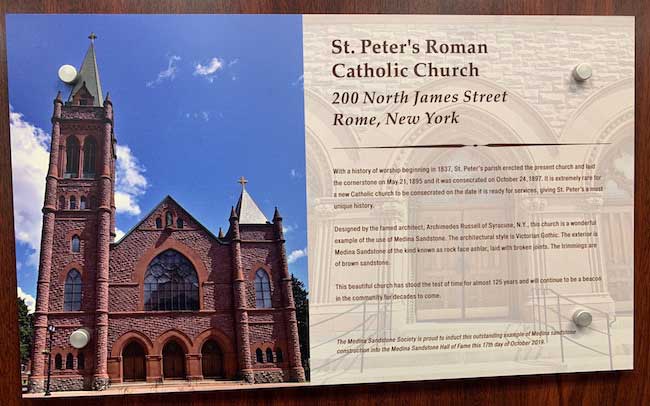
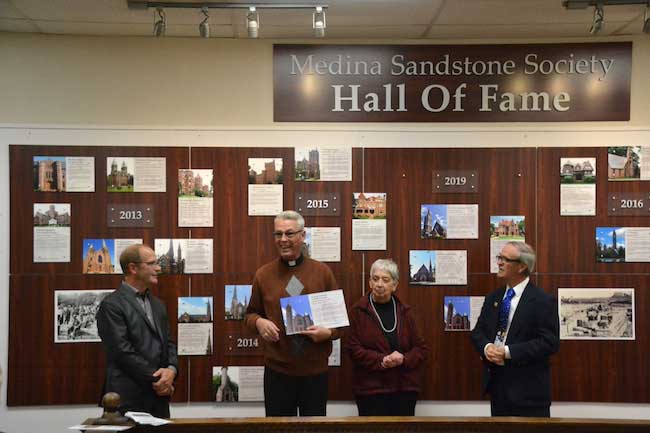
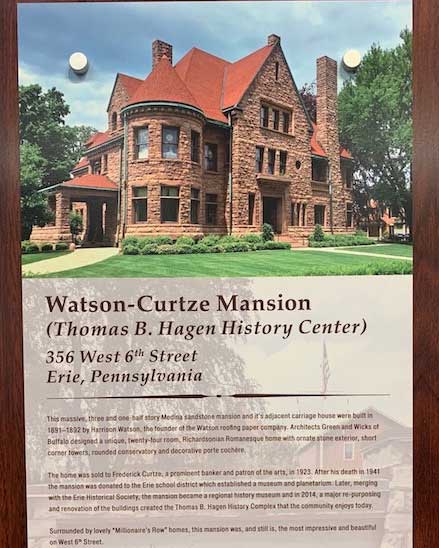 This massive, three and one-half story Medina sandstone mansion and it’s adjacent carriage house were built in 1891-1892 by Harrison Watson, the founder of the Watson roofing paper company.
This massive, three and one-half story Medina sandstone mansion and it’s adjacent carriage house were built in 1891-1892 by Harrison Watson, the founder of the Watson roofing paper company.